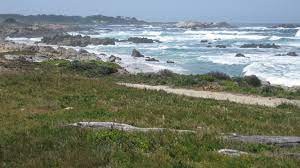~Jacqueline (Jacki) Phelps, MPPA
The California Natural Resources Agency (CNRA) is an executive branch agency within the state that reports to the Office of the Governor. Specifically, CNRA oversees and supports the work of twenty-six state departments, conservancies, and commissions that are charged with managing the diverse natural resources located within the 100-million acres of land that make up the state of California. A comprehensive list of agencies within CNRA can be found here. The mission of CNRA is to “restore, protect and manage the state’s natural, historical and cultural resources for current and future generations using creative approaches and solutions based on science, collaboration, and respect for all the communities and interests involved.”
In addition to this overarching mission, each agency within CNRA has a specific mission and role in managing the state’s resources. The California Coastal Commission (Commission) is a CNRA agency with a mission to protect and enhance California’s coast and ocean for present and future generations. This is done in partnership with local governments by regulating development activities along the state’s approximately 1,200-mile shoreline in order to protect resources such as sensitive habitats, water quality, public access, and recreation.
While completing my undergraduate degree at UC Santa Cruz and searching for potential internship opportunities, I became familiar with the Commission and was immediately drawn to its strong mission. The Commission has six offices located along the coast, including in Santa Cruz and Ventura. Although there weren’t any internships posted online, I contacted the district director in the Santa Cruz office, conveyed my interest in the agency, interviewed, and was offered an internship opportunity. I knew immediately that the Commission was a great fit for me and while still working to complete my degree, successfully passed the examination process that is required to be eligible for a paid position. After graduating I applied for and was offered an analyst job in the Commission’s Ventura office. Currently I hold the position of district supervisor and have been working in the Ventura office for nearly ten years.
Applying for a job with the state can seem daunting, as there are often several steps that need to be taken prior to becoming eligible for employment. Most often, an interested candidate must successfully complete an examination for the specific job classification that they are interested in, and then they are able to participate in the application process. The CNRA website provides helpful information on this process. Additionally, most agencies have a “Jobs” tab on their website with additional information on the hiring process and the positions available. For example, the Commission website has links to the appropriate application forms, examination announcements, as well as a list of available paid and volunteer positions. If there is a specific agency that you are interested in, I encourage you to try and connect with employees of that agency to gain insight on the work of the agency, as well as the skills that would help to make you a successful candidate. Additionally, the human resources or recruitment office of that particular agency can offer guidance to ensure that you are completing the appropriate steps to become eligible for employment.
In the Environmental Policy and Planning course that I teach, we take an in depth look into the functions of many CNRA agencies, as well as the laws that they implement. Employees of local agencies and organizations also join us to not only share their work but also their path to obtaining their current position. Additionally, course assignments give students the opportunity to conduct in-depth research on an environmental policy topic of their choosing. This allows for research into specific agencies, like those within CNRA, as well as existing laws and policy frameworks. In class this summer, students examined several interesting and pertinent topics including wildfire, coastal public access, and temperature increase as a result of climate change, and they were able to share their findings and analysis with the class.
This winter term I will also be leading a capstone project in partnership with the County of Ventura Resources Management Agency to research and analyze existing laws and policies relating to environmental justice in order to propose recommendations for the El Rio/Del Norte Area Plan Update. This capstone is a great opportunity to gain insight into policy creation through the lens of environmental justice.
Please feel free to get in touch with me at jphelps@callutheran.edu or connect with me on LinkedIn if you have any questions about the course or if you are interested in learning more about a career in the environmental field!

